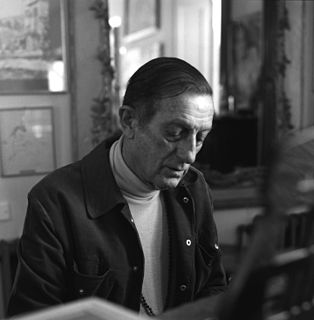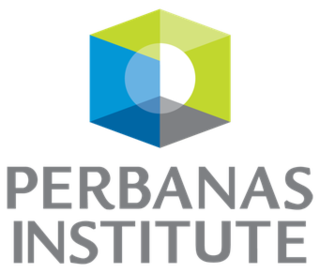
Sacred Harp singing is a tradition of sacred choral music that originated in New England and was later perpetuated and carried on in the American South of the United States. The name is derived from The Sacred Harp, a ubiquitous and historically important tunebook printed in shape notes. The work was first published in 1844 and has reappeared in multiple editions ever since. Sacred Harp music represents one branch of an older tradition of American music that developed over the period 1770 to 1820 from roots in New England, with a significant, related development under the influence of "revival" services around the 1840s. This music was included in, and became profoundly associated with, books using the shape note style of notation popular in America in the 18th and early 19th centuries.

The Congregation of the Sacred Hearts of Jesus and Mary and of the Perpetual Adoration of the Most Holy Sacrament of the Altar is a Roman Catholic religious institute of brothers, priests, and nuns. The priests of the Congregation of the Sacred Hearts of Jesus and Mary are also known as the Picpus Fathers, because their first house was on the Rue de Picpus in Paris, France. Their post-nominal letters, SS.CC., are the Latin initials for Sacrorum Cordium, "of the Sacred Hearts"..

The Hebrew Union College-Jewish Institute of Religion is a Jewish seminary with several locations in the United States and one location in Jerusalem. It is the oldest extant Jewish seminary in the Americas and the main seminary for training rabbis, cantors, educators and communal workers in Reform Judaism. HUC-JIR has campuses in Cincinnati, Ohio, New York City, Los Angeles, California and Jerusalem. The Jerusalem campus is the only seminary in Israel for training Reform Jewish clergy.

Alain Daniélou was a French historian, intellectual, musicologist, Indologist, and a noted Western convert to and expert on Shaivite Hinduism.

Deborah Lynn "Debbie" Friedman was an American singer-songwriter of Jewish religious songs and melodies. She was born in Utica, New York, but moved with her family to Minnesota at age 6. She is best known for her setting of "Mi Shebeirach", the prayer for healing, which is used by hundreds of congregations across America. Her songs are used by some Orthodox Jewish congregations, as well as non-Orthodox Jewish congregations. Friedman was a feminist, and Orthodox Jewish feminist Blu Greenberg noted that while Friedman's music impacted most on Reform and Conservative liturgy, "she had a large impact [in] Modern Orthodox shuls, women’s tefillah [prayer], the Orthodox feminist circles.... She was a religious bard and angel for the entire community."

Froville is a commune in the Meurthe-et-Moselle department in north-eastern France.
An institute of consecrated life is an association of faithful in the Catholic Church erected by canon law whose members profess the evangelical counsels of chastity, poverty, and obedience by vows or other sacred bonds. They are defined in the Code of Canon Law under canons 573–730.

Boston University School of Theology (BUSTH) is the oldest theological seminary of American Methodism and the founding school of Boston University, the largest private research university in New England. It is one of thirteen theological schools maintained by the United Methodist Church. BUSTH is a member of the Boston Theological Institute consortium.
Non-religious secular music and sacred music were the two main genres of Western music during the Middle Ages and Renaissance era. The oldest written secular music are songs with Latin lyrics. However, many secular songs were sung in the vernacular language, unlike the sacred songs that followed the Latin language of the Church. These earliest types were known as the chanson de geste and were popular amongst the traveling jongleurs and minstrels of the time.
In the Catholic Church, liturgy is divine worship, the proclamation of the Gospel, and active charity.
Tra le sollecitudini was a motu proprio issued 22 November 1903 by Pope Pius X that detailed regulations for the performance of music in the Roman Catholic Church. The title is taken from the opening phrase of the document. It begins: "Among the concerns of the pastoral office, ... a leading one is without question that of maintaining and promoting the decorum of the House of God in which the august mysteries of religion are celebrated...." The regulations pointed toward more traditional music and critiqued the turn toward modern, orchestral productions at Mass. Use of the term "active participation" of the faithful anticipated this emphasis at the Second Vatican Council.
The Ravenna Festival is a summer festival of opera and classical music held in the city of Ravenna, Italy and the surrounding area each June and July.
The Yale Institute of Sacred Music traces its roots to the School of Sacred Music founded at Union Theological Seminary in New York City. The seminary's department of church music was brought to Yale in 1972, entering into partnership with the Yale School of Music and the Yale Divinity School. The Institute offers programs in organ performance, choral conducting, liturgical studies, voice, and religion and the arts.
David Hill, is a choral conductor and organist. Beginning July 2013, he holds an appointment to the Yale Institute of Sacred Music. His highest-profile roles are as Chief Conductor of the BBC Singers from September 2007 until 2017, and Musical Director of The Bach Choir since April 1998.
The Master of Sacred Music degree is a two to five-year post-baccalaureate degree that combines academic and musical studies. The closure of graduate programs in organ performance across America has made the MSM increasingly the de facto degree for advanced studies in church music; MSM graduates who wish to continue their studies have the option of academic or applied (DMA) tracks. Most MSM programs are limited to choral conducting and organ performance, as these two applied fields are the primary occupations of church music directors. Piano Performance is usually taught as a subdiscipline or acquired separately.
Musicam sacram is the title of an instruction on Roman Catholic sacred music issued by the Sacred Congregation of Rites on 5 March 1967 in conjunction with the Second Vatican Council. The instruction deals with the form and nature of worship music within the framework of Sacrosanctum concilium. According to the document, it is not a collection of "all the legislation on sacred music; it only establishes the principal norms which seem to be more necessary for our own day."
A pontifical university is a Catholic university established by and directly under the authority of the Holy See. It is licensed to grant academic degrees in sacred faculties, the most important of which are Sacred Theology, Canon Law, Sacred Scripture and Philosophy. Pontifical universities follow a European system of degrees in the sacred faculties, granting the baccalaureate, the licentiate, and the doctorate.

The Pontifical Institute of Sacred Music is an institution of higher education of the Roman Catholic Church specifically dedicated to the study of church music. It is based in Rome, Italy, located in the former Pontifical Abbey of St Jerome-in-the-City.

Thirayattam is a ritual performing ethnic art form of the South Malabar region in Kerala state, India. It blend of dance, theatre, music, satire, facial and body painting, masking, martial art and ritualistic function. This vibrant art form has a great resemblance to the traditions and customs of the ancient civilization. Thirayattam usually enacted in courtyards of "kaavukal" and village shrines of south Malabar region in Kerala. Traditionally, the "Perumannan" community has the right to perform this magnificent art form in "kaavukal". Today, the members of "Panan" and "Cherumar" communities also perform Thirayattam. The performer comes into a trance with "Moorthy" or deity whose "Kolam" is enacted and moves vigorously, exhibiting belligerent mannerism and gestures, believed to be divine.

Perbanas Institute, in South Jakarta, Indonesia, is a tertiary school. Founded on February 19, 1969 by the Banks Association (Perbanas), the institute focuses on banking, finance and informatics. Established to meet the needs of banking personnel, it was organized by the Banks Association Education Foundation.









